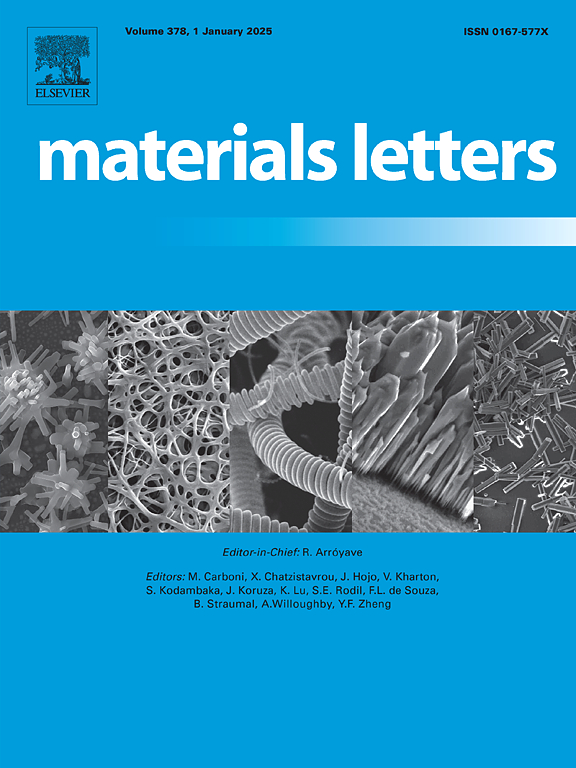Investigation of diffusion bonding mechanisms and joint properties of TZM and Zr-4 using Ti interlayer
IF 2.7
4区 材料科学
Q3 MATERIALS SCIENCE, MULTIDISCIPLINARY
引用次数: 0
Abstract
The diffusion bonding of Titanium-Zirconium-Molybdenum Alloy (TZM) and Zirconium alloy (Zr-4) using a Ti interlayer was investigated. A solid solution transition layer (∼180 μm) formed at the Zr-4/Ti interface, with Zr diffusing into Ti in a dendritic-like pattern. In contrast, the Ti/TZM interface exhibited a thinner (∼6 μm), protrusion-like bonding layer due to Ti penetration. The joints bonded at 1020 °C exhibited the highest average tensile strength of 394.3 MPa. Fracture initiates at the Ti/TZM interface and propagates into the Ti interlayer, with ductile fracture on the Ti side and cleavage brittle fracture on the TZM side.
求助全文
约1分钟内获得全文
求助全文
来源期刊

Materials Letters
工程技术-材料科学:综合
CiteScore
5.60
自引率
3.30%
发文量
1948
审稿时长
50 days
期刊介绍:
Materials Letters has an open access mirror journal Materials Letters: X, sharing the same aims and scope, editorial team, submission system and rigorous peer review.
Materials Letters is dedicated to publishing novel, cutting edge reports of broad interest to the materials community. The journal provides a forum for materials scientists and engineers, physicists, and chemists to rapidly communicate on the most important topics in the field of materials.
Contributions include, but are not limited to, a variety of topics such as:
• Materials - Metals and alloys, amorphous solids, ceramics, composites, polymers, semiconductors
• Applications - Structural, opto-electronic, magnetic, medical, MEMS, sensors, smart
• Characterization - Analytical, microscopy, scanning probes, nanoscopic, optical, electrical, magnetic, acoustic, spectroscopic, diffraction
• Novel Materials - Micro and nanostructures (nanowires, nanotubes, nanoparticles), nanocomposites, thin films, superlattices, quantum dots.
• Processing - Crystal growth, thin film processing, sol-gel processing, mechanical processing, assembly, nanocrystalline processing.
• Properties - Mechanical, magnetic, optical, electrical, ferroelectric, thermal, interfacial, transport, thermodynamic
• Synthesis - Quenching, solid state, solidification, solution synthesis, vapor deposition, high pressure, explosive
 求助内容:
求助内容: 应助结果提醒方式:
应助结果提醒方式:


